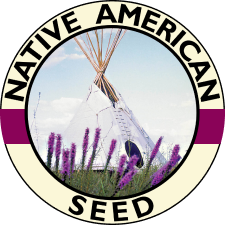43 species – an ecosystem in a bag!
Help jumpstart healing of your land after stricken by drought, wildfire, or cedar and right-of-way clearing. This mix was first developed to address the aftermath of 2011 wildfires in the steep, rocky hills west of Interstate 35 in Texas. A combination of native warm season and cool season annuals and perennials, wildflowers and native grasses, it is useful in reducing erosion and restoring wildlife habitat.
Because of its large variety of native species, this mix can be planted in spring or fall. Seeding rates are calculated to provide 40 live seeds per square foot. Reseeding should be used as a tool in combination with other erosion control methods.
Wildfire Recovery: Evaluations conducted by the Natural Resource Conservation Service (NRCS) indicate steep rocky slopes in wildfires that were once covered with juniper / cedar breaks have burned so hot that dormant seeds in the soil may be sterilized. Despite significant rainfall, re-sprouting can be 80% below the established standard for adequacy. Other areas have indicated near 100% mortality of the perennial grasses.
After heavy rains, soil erosion may produce devastating long term impacts to the watershed and the sustainability of the land resource. Landowners impacted by wildfires will benefit by protecting their resources. Reseeding with diverse mixtures of native rangeland species, including fall sprouting annual forbs, wildflowers, and warm season perennial grasses, can help jumpstart healing of damaged lands. For fall plantings, a cool season nurse crop of Cereal Rye Grain added at 20 - 40lbs / acre will improve erosion control while perennial natives become established.
.
- SAND DROPSEED
- PLAINS BRISTLEGRASS
- WHITE TRIDENS
- PURPLE PRAIRIE CLOVER
- GREEN SPRANGLETOP
- TALL DROPSEED
- WHITE PRAIRIE CLOVER
- SAND LOVEGRASS
- MIDWAY MIX
- LITTLE BLUESTEM
- ILLINOIS BUNDLEFLOWER
- HOODED WINDMILL GRASS
- LEMON MINT
- SIDEOATS GRAMA
- VIRGINIA WILDRYE
- INDIAN BLANKET
- PLAINS COREOPSIS
- PRAIRIE WILDRYE
- INDIANGRASS
- BUFFALOGRASS
- RED LOVEGRASS
- SWITCHGRASS
- ARIZONA COTTONTOP
- CANE BLUESTEM
- AMERICAN BASKETFLOWER
- SOUTHWESTERN BRISTLEGRASS
- SLIM TRIDENS
- COMMON SUNFLOWER
- PURPLE THREE AWN
- GAYFEATHER
- HUISACHE DAISY
- TEXAS YELLOW STAR
- CURLY MESQUITE
- TEXAS BLUEBONNET
- CUTLEAF DAISY
- TEXAS CUPGRASS
- PRAIRIE VERBENA
- WHITE ROSINWEED


















